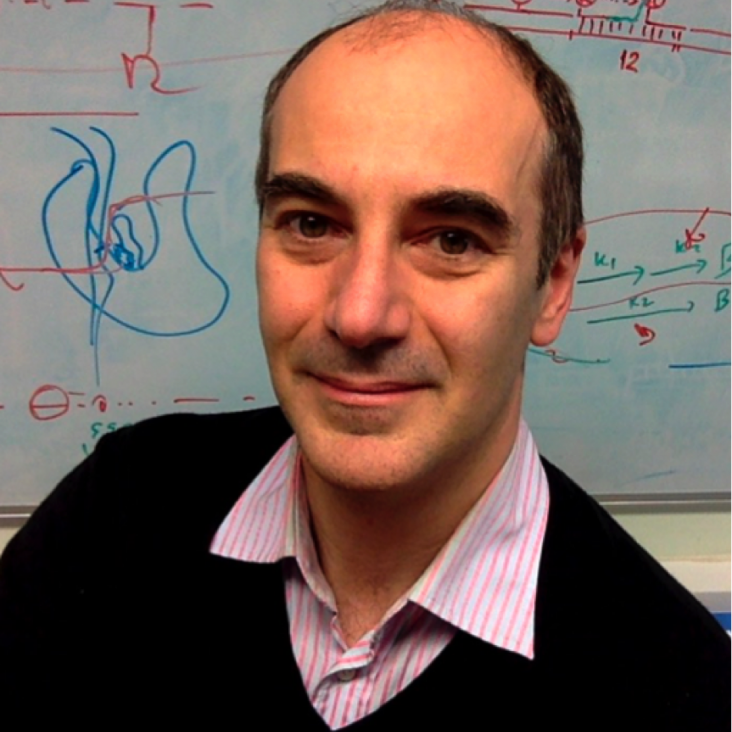RNA polymerase clamp conformational dynamics: long-lived states and modulation by crowding, cations, and nonspecific DNA binding
Nucleic Acids Research Oxford University Press 49:5 (2021) 2790-2802
Abstract:
The RNA polymerase (RNAP) clamp, a mobile structural element conserved in RNAP from all domains of life, has been proposed to play critical roles at different stages of transcription. In previous work, we demonstrated using single-molecule Förster resonance energy transfer (smFRET) that RNAP clamp interconvert between three short-lived conformational states (lifetimes ∼ 0.3–0.6 s), that the clamp can be locked into any one of these states by small molecules, and that the clamp stays closed during initial transcription and elongation. Here, we extend these studies to obtain a comprehensive understanding of clamp dynamics under conditions RNAP may encounter in living cells. We find that the RNAP clamp can populate long-lived conformational states (lifetimes > 1.0 s) and can switch between these long-lived states and the previously observed short-lived states. In addition, we find that clamp motions are increased in the presence of molecular crowding, are unchanged in the presence of elevated monovalent-cation concentrations, and are reduced in the presence of elevated divalent-cation concentrations. Finally, we find that RNAP bound to non-specific DNA predominantly exhibits a closed clamp conformation. Our results raise the possibility of additional regulatory checkpoints that could affect clamp dynamics and consequently could affect transcription and transcriptional regulation.Amplification-Free Detection of Viruses in Minutes using Single-Particle Imaging and Machine Learning
Biophysical Journal Elsevier 120:3 (2021) 195a
Single-Molecule Fret Analysis of Key Protein Conformational Changes During Promoter Escape by RNA Polymerase
Biophysical Journal Elsevier 120:3 (2021) 109a
High-throughput nitrogen-vacancy center imaging for nanodiamond photophysical characterization and pH nanosensing
Nanoscale Royal Society of Chemistry 12:42 (2020) 21821-21831
Abstract:
The fluorescent nitrogen-vacancy (NV) defect in diamond has remarkable photophysical properties, including high photostability which allows stable fluorescence emission for hours; as a result, there has been much interest in using nanodiamonds (NDs) for applications in quantum optics and biological imaging. Such applications have been limited by the heterogeneity of NDs and our limited understanding of NV photophysics in NDs, which is partially due to the lack of sensitive and high-throughput methods for photophysical analysis of NDs. Here, we report a systematic analysis of NDs using two-color wide-field epifluorescence imaging coupled to high-throughput single-particle detection of single NVs in NDs with sizes down to 5-10 nm. By using fluorescence intensity ratios, we observe directly the charge conversion of single NV center (NV- or NV0) and measure the lifetimes of different NV charge states in NDs. We also show that we can use changes in pH to control the main NV charge states in a direct and reversible fashion, a discovery that paves the way for performing pH nanosensing with a non-photobleachable probe.Transient non-specific DNA binding dominates the target search of bacterial DNA-binding proteins
Cold Spring Harbor Laboratory (2020) 2020.08.13.249771


